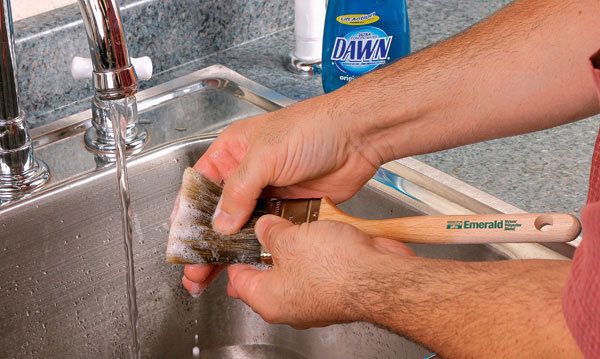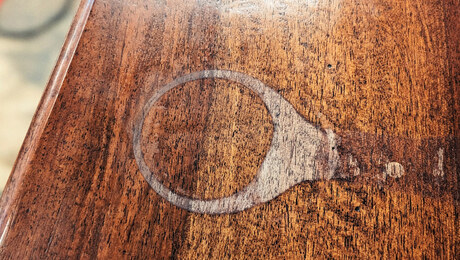How to Maintain Your Finish Brush
Learn how to clean a good brush and you'll be rewarded with many years of flawless service.
Learn how to properly clean your finishing brushes in this excerpt from our June 2010 (FWW #212) article, The Best Brushes. For even more information, be sure to read part I, which details brush selection for a wide variety of finishes.
Cleaning Starts Before You Begin
So you’re anxious to see how your new brush works. Before you dip it in the finish, though, there are a couple of steps to take. First, even the best brush may have one or two loose filaments (cheap brushes will have many), so rather than pick hairs out of a wet finish, bend the filaments back and forth with your hand a few times, pulling gently on them. Hold the tip up to the light and remove any filaments protruding above the rest. Now dip the brush into a solvent that matches the finish you[‘ll be using and then squeeze out the solvent onto a paper towel. This coats the filaments with solvent and makes cleaning the brush much easier when you’ve finished using it.


| Wet the brush first. Before dipping the brush in finish, wet the filmanets in a solvent compatible with the finish. This will coat the filaments in solvent and make cleaning thr brush easier after you’ve finished with it. | Dip a toe in. Only submerge about a third of the filaments in finish. If you go deeper, it is harder to apply an even coat. Also, finish will tend to pool in the bottom of the brush and then run down the ferrule when brushing vertical surfaces. |
Shellac, Lacquer, and Water-Based Finishes Clean Up Easily

Shellac and lacquer: let it dry.
Brushes used for lacquer and shellac don’t need to be cleaned thoroughly. Give it a swish in lacquer thinner or denatured alcohol, shake it out, and let it dry hard. When you need it again, just stand it in solvent. It will be soft and ready to use within 30 minutes.
Water-soluble finishes: use soap and water.
Use hot water and dish soap to remove water-based finishes from brushes. Lather, rinse, and repeat two or three times.

Oil-Based Finishes are Hardest to Clean
Let’s start with the good news: You don’t need to clean the brush if you plan to use it again within 24 hours. Instead, suspend the brush in mineral spirits that have previously been used for cleaning a brush. Keep the tips of the filaments off the bottom of the container so they don’t get bent or contaminated with residue.
|
|
| Let it soak between coats. If they are going to be reused within 24 hours, brushes containing an oil-based finish can be suspended in mineral spirits. Use a kebab skewer through the handle to avoid bending the bristles. |
When you’re done with the brush, rinse it a couple of times in used mineral spirits, then pure mineral spirits, removing the bulk of the solvent on newspaper each time. Now rinse the brush in hot soapy water several times before giving it a final cleaning using either citrus cleaner or household ammonia. If you can’t smell any mineral spirits on the filaments, the brush is clean and can be wrapped in paper and put away.
 |
 |
| Solvent, then soap. Rinse the brush two or three times in mineral spirits, then remove the solvent on newspaper before cleaning the brush with hot water and soap. | Final cleaning. To remove any last traces of mineral spirits, rinse the brush in either a citrus cleaner or household ammonia. |
 |
| Ready for next time. To let any moisture escape and at the same time keep out dust, wrap the brush in brown paper or the original cardboard wrapper. |
TIP: Reuse Your Mineral Spirits
 |
 |
Don’t toss it. After you have cleaned a brush, pour the contaminated mineral spirits into a sealable container. After a few weeks, the residue will sink to the bottom of the container and you can pour off clean mineral spirits for reuse.
Fine Woodworking Recommended Products

Odie's Oil

Foam Brushes

Osmo Polyx-Oil























Log in or create an account to post a comment.
Sign up Log in